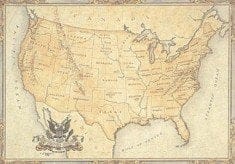
It’s MovieMaker’s 2014 edition of the Best Places to Live and Work as a Moviemaker! We’re counting down through our Top 10 Big Cities, Top 5 Small Cities, and Top 5 Towns—releasing one location a day for the entire month of January. The full list, published in MovieMaker‘s Winter 2014 issue, will be available on newsstands January 28.
Unlike previous years where locations were pitted against each other in a single pool, this year we separated the list into three distinct categories: Big Cities (pop. 500,000 and up), Small Cities (pop. 100,000 to 500,000), and Towns (pop. 100,000 and under). After months of research, interviews, and mathematical formulas, we boiled the rankings down to the essential elements. All locations were rated according to six criteria: Film Production in 2013 (shooting days, number of productions, dollars generated), Film Community and Culture (film schools, festivals, independent theaters, film organizations), Access to Equipment and Facilities, Tax Incentives, Cost of Living, and a General category that included lifestyle, weather, and transportation. Did your place of choice make the list? If not, maybe you should choose again if you’re serious about rooting yourself in a location that’s conducive to your career and life goals – or drop us a comment proposing a place we overlooked this year!
______________________
Top 10 Big Cities
#4. Los Angeles
In Los Angeles, an indie moviemaker will never feel alone: There are more movies made, more theaters, more schools with film programs, more specialized film schools, and more writers, actors, and moviemakers than anywhere on the planet. There’s UCLA, USC, American Film Institute, the Los Angeles Film School, American Feature Film Academy, Chapman, Cinema Arts Tech, etc. And in addition to one of the largest film markets in the world (AFM), if you want festivals, there’s practically one every week, with AFI Fest and Los Angeles Film Fest reigning as the largest.
The California Film Commission offers a 25 percent tax credit for an independent (not publicly traded) film budgeted between $1 and $10 million, or more than 25 percent owned by a publicly traded company. Seventy-five percent of the project’s production days or budget must take place in California to qualify and there is no state hotel tax on occupancy. While there is a $100 million cap from now until FY 13/14 for larger films, $10 million is reserved for independents on a first-come, first-serve basis. (The cap has been met through June 2014, however, and you’ll have to contact the Film Commission to be placed on a waiting list going forward.)
There’s really no better weather in the world than Southern California, and LA is a never-ending treasure chest of diverse neighborhoods and undiscovered cultural delights, making it a wonderful cinematic landscape. For example, Spike Jonze’s Her was shot in a digitally altered, futuristic Los Angeles (mixed in with footage of Shanghai). This vastness is a blessing and a curse, though; public transport remains inadequate, and, according to a recent study by USA Today, traffic is the absolute worst in the country. Resign yourself to losing hours every month on a freeway. MM
For more information about filming in Los Angeles visit the California Film Commission.
Check back every day for the rest of January to see what other places made the list! Previous rankings:
BIG CITIES
10) San Francisco
9) Memphis
8) Portland
7) Philadelphia
6) Boston
5) Seattle
To subscribe to MovieMaker Magazine, click here.
Share:




